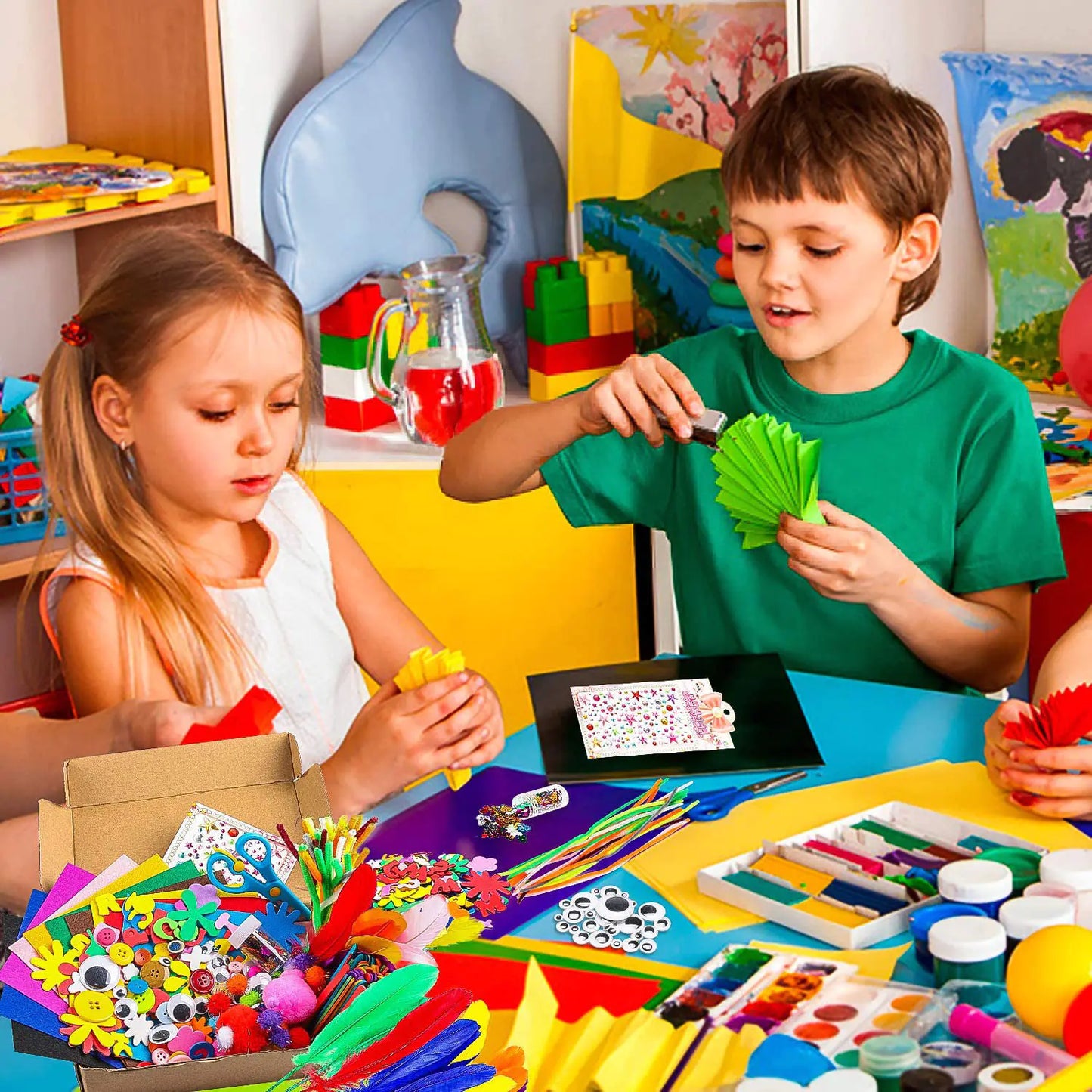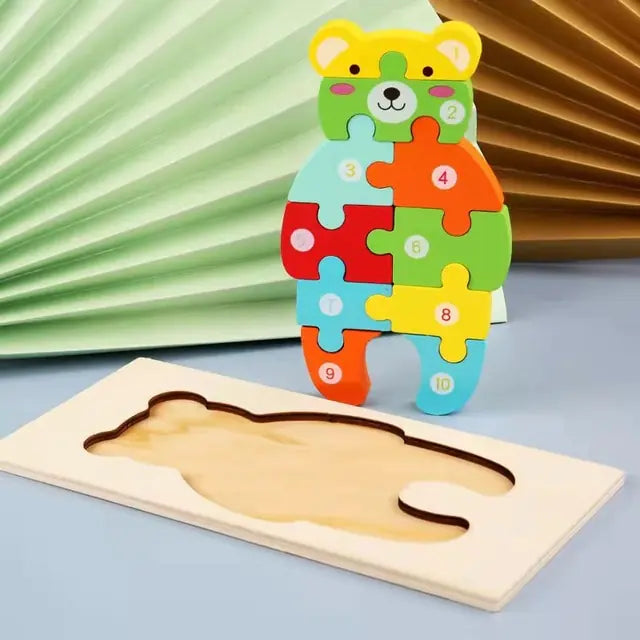Introducing your child to the fascinating world of robotics has never been more accessible or exciting. Today's kids robot kits blend fun with serious STEM learning, offering hands-on experiences that develop critical thinking, problem-solving skills, and technological literacy. Whether your child is a curious preschooler or a tech-savvy tween, there's a perfect robotics kit waiting to spark their imagination and foster their development.
In this comprehensive guide, we'll explore the best robot kits for kids across different age groups and skill levels, helping you make an informed choice that aligns with your child's interests and learning style. From screen-free options for younger children to advanced coding platforms for budding programmers, we've researched and reviewed the top contenders to simplify your decision.

Why Robot Kits Are Valuable Educational Tools
Before diving into specific product recommendations, let's understand why robot kits have become such powerful educational tools for children of all ages:

How to Choose the Right Robot Kit for Your Child
Selecting the perfect kids robot kit involves considering several key factors that match the product to your child's specific needs and abilities:
Age Appropriateness
Consider both the recommended age range and your child's individual development. Some younger children may be ready for more advanced kits, while others might need to start with simpler options.

Skill Level & Complexity
Beginner kits should offer quick success with minimal frustration, while advanced options can provide more challenging experiences for children who have mastered the basics.

Learning Focus
Different kits emphasize various aspects of STEM learning. Some focus on mechanical engineering and building, others on coding and programming, and some balance multiple skills.

Screen Time Considerations
If limiting screen time is important, look for screen-free options that use physical programming blocks or simple remote controls instead of apps or computers.

Expandability
Some kits offer expansion packs or compatibility with other systems, allowing the toy to grow with your child's developing skills and interests.

Budget & Value
Consider not just the initial price but the educational value, durability, and potential for extended use over time when evaluating the investment.

Top-Rated Kids Robot Kits for 2023
After extensive research and testing, we've identified six outstanding robot kits that offer exceptional educational value across different age groups and learning objectives. Each of these kits provides unique benefits while maintaining high standards for quality and engagement.
Ready to explore the best robot kits for your child?
Browse our complete collection of educational robotics toys designed to inspire young minds and develop crucial STEM skills.
Shop Robot Kits Now1. KIBO Screen-Free Robot Kit (Ages 4-7)

The KIBO robot kit stands out as an exceptional option for younger children, offering a completely screen-free coding experience. Designed specifically for ages 4-7, this research-backed educational tool allows children to create, program, and decorate their own robot without requiring any screen time from computers, tablets, or smartphones.
What makes KIBO special is its intuitive programming method using wooden blocks with embedded barcodes. Children arrange these blocks to create sequences, then scan them with the robot to execute commands. This tangible approach to coding fundamentals helps develop computational thinking in an age-appropriate way.
Pros
- Completely screen-free learning experience
- Wooden blocks provide tactile programming
- Research-backed educational design
- Encourages creativity with decorative elements
- Suitable for classroom or home use
Cons
- Higher price point than some alternatives
- Limited expansion beyond the base kit
- May be outgrown as coding skills advance
2. Wonder Workshop Dash Robot (Ages 6-11)

The Wonder Workshop Dash Robot offers an engaging introduction to coding for elementary school children. This charming blue robot comes fully assembled and ready for immediate play, making it perfect for kids who want to jump straight into programming without the building phase.
Dash responds to voice commands, navigates objects, dances, sings, and can be programmed using Wonder Workshop's suite of free apps. The block-based coding interface grows with your child, starting with simple drag-and-drop commands and advancing to more complex programming concepts as skills develop.
Pros
- No assembly required - ready to use immediately
- Multiple free apps with different learning objectives
- Compatible with Lego bricks for customization
- Excellent customer support and learning resources
- Durable construction for classroom or home use
Cons
- Requires a compatible tablet or smartphone
- Battery life could be longer (about 3 hours of active use)
- Some advanced features require additional accessories
3. Makeblock mBot Robotics Kit (Ages 8-12)

The Makeblock mBot strikes an excellent balance between building and programming, making it ideal for children ready to explore both hardware and software aspects of robotics. This kit teaches electronics fundamentals while introducing block-based coding through a modified version of Scratch.
Assembly takes about 15-30 minutes with the included tools, offering enough hands-on building to be satisfying without becoming overwhelming. Once built, the mBot can follow lines, avoid obstacles, and be controlled remotely through the free app, which includes 60 progressive coding challenges.
Pros
- Excellent introduction to electronics and circuits
- Compatible with Lego bricks for creative expansion
- Progressive coding challenges keep children engaged
- Multiple sensors included in the base kit
- Expandable with additional components
Cons
- Some small parts require careful handling
- App occasionally has connectivity issues
- Instructions could be clearer for beginners
4. Lego Boost Creative Toolbox (Ages 7-12)

The Lego Boost Creative Toolbox combines the familiar joy of Lego building with introductory robotics and coding. This versatile kit allows children to build five different robot models from the same set of pieces, including Vernie the Robot, a guitar, a cat, a rover, and an auto-builder.
Programming happens through the free Lego Boost app, which uses an intuitive icon-based coding language designed specifically for children who are just beginning to read. The app guides kids through a series of 60+ activities that progressively introduce new coding concepts while keeping the experience playful.
Pros
- Five different robot models from one kit
- Compatible with other Lego sets for unlimited creativity
- Excellent build instructions in the app
- Progressive learning path through guided activities
- Familiar Lego quality and durability
Cons
- Requires tablet or smartphone for programming
- Battery compartment design could be improved
- Some builds require complete disassembly to create others
5. Sphero BOLT Programmable Robot Ball (Ages 8+)

The Sphero BOLT takes a unique approach to robotics with its spherical design that combines play with sophisticated programming possibilities. This transparent robot ball features an 8x8 LED matrix that can display animations, real-time data, and text, along with advanced sensors including a compass, light sensor, and gyroscope.
What sets the BOLT apart is its versatility in programming approaches. Children can start with draw-and-drive controls, advance to block-based coding, and eventually transition to JavaScript text programming—all within the same Sphero Edu app. This makes it an excellent long-term investment that grows with your child's coding abilities.
Pros
- Waterproof and extremely durable design
- Supports multiple programming languages
- LED matrix adds visual programming dimension
- Excellent community and educational resources
- 2+ hour battery life with inductive charging
Cons
- Higher price point than some alternatives
- Limited building/construction component
- Can be challenging to control precisely at first
6. Sillbird Solar Robot Kit (Ages 8-12)

The Sillbird Solar Robot Kit offers an eco-friendly introduction to robotics and renewable energy. This versatile 12-in-1 building set allows children to construct different robot configurations powered entirely by solar energy, eliminating the need for batteries while teaching important concepts about alternative power sources.
With 190 pieces and two difficulty levels, this kit provides an excellent balance of accessibility and challenge. Younger builders can start with simpler designs before progressing to more complex configurations, making it suitable for a range of ages and abilities.
Pros
- No batteries required - entirely solar powered
- 12 different robot designs from one kit
- Teaches renewable energy concepts
- Excellent value for the price
- Screen-free STEM learning experience
Cons
- Requires good sunlight to operate effectively
- Some small parts may require adult assistance
- No programming component
- Instructions could be clearer for some builds
Comparison: Finding the Best Robot Kit for Your Child's Needs
To help you quickly compare the key features of our recommended robot kits, we've created this comprehensive comparison table highlighting the most important factors to consider:
| Robot Kit | Age Range | Programming Method | Screen Required | Assembly Level | Price Range |
| KIBO Screen-Free Robot | 4-7 years | Wooden blocks with barcodes | No | Minimal | $$$ |
| Wonder Workshop Dash | 6-11 years | Block-based apps | Yes | None | $$$ |
| Makeblock mBot | 8-12 years | Scratch-based | Yes | Moderate | $$ |
| Lego Boost | 7-12 years | Icon-based app | Yes | Extensive | $$$ |
| Sphero BOLT | 8+ years | Draw, blocks, or JavaScript | Yes | None | $$$ |
| Sillbird Solar Robot | 8-12 years | None (mechanical) | No | Moderate to Complex | $ |
Find the perfect robot kit for your child's age and interests
Browse our complete selection of educational robotics toys with detailed specifications and parent reviews.
Shop All Robot KitsEducational Benefits: What Children Learn from Robot Kits
Robot kits offer far more than just entertainment—they provide a comprehensive STEM learning experience that develops multiple skills simultaneously. Understanding these educational benefits can help you select a kit that aligns with your child's learning goals and developmental needs.
Cognitive Development
Technical Skills

Social-Emotional Learning
Academic Connections
Tips for Parents: Maximizing the Learning Experience
Start at the Right Level
Choose a robot kit that matches your child's current abilities while offering room for growth. Starting too advanced can lead to frustration, while something too simple may not hold their interest for long.

Balance Guidance and Discovery
Provide support when needed, but allow your child space to experiment and even make mistakes. The problem-solving process is where much of the learning happens, so resist the urge to take over.

Connect to Real-World Applications
Help your child understand how the concepts they're learning relate to real-world robotics and technology. Point out robots in daily life, from automated vacuum cleaners to manufacturing systems.

"The best robot kits grow with your child, offering new challenges as their skills develop. Look for options with expandability or programming platforms that introduce more advanced concepts over time."
Ready to start your child's robotics journey?
Explore our carefully selected collection of educational robot kits designed to inspire young minds and develop crucial STEM skills.
Browse Robot Kits NowFrequently Asked Questions About Kids Robot Kits
At what age should my child start with robotics?
Children as young as 4 years old can begin exploring robotics with age-appropriate kits like KIBO that use screen-free programming methods. For most children, the sweet spot for beginning robotics education is between 6-8 years old, when they have developed the necessary fine motor skills and basic logical thinking abilities. However, it's never too late to start—there are excellent entry-level kits designed for older beginners as well.
Are robot kits worth the investment?
Quality robot kits typically represent a good educational investment, especially when considering the range of skills they develop simultaneously. Look for kits that offer expandability or growing complexity to extend their useful life. Many parents report that robot kits engage children for much longer periods than traditional toys, effectively lowering the cost-per-hour of use. Additionally, the STEM skills developed through robotics can provide academic and eventually career advantages that far outweigh the initial investment.
How much parent involvement is required?
The level of parent involvement varies by both the kit and the child's age. Younger children (4-7) typically need more assistance with assembly and initial programming concepts. Most quality kits include clear instructions designed for the target age group, but parents should expect to provide support, especially during initial setup and learning. As children gain experience, they generally become more independent with their robotics projects. Many parents find that robotics becomes an enjoyable shared activity that offers quality learning time together.
What's the difference between coding toys and robot kits?
Coding toys primarily focus on programming concepts, often using simplified interfaces or physical components to teach logical thinking and sequencing. Robot kits typically include both a building/engineering component and a programming element, offering a more comprehensive STEM experience. While there's significant overlap between these categories, robot kits generally provide a more complete introduction to both the hardware and software aspects of technology.
Are there robot kits that don't require screens?
Yes! Several excellent robot kits offer screen-free experiences, which can be particularly valuable for younger children or in households that limit screen time. The KIBO robot uses wooden programming blocks with barcodes, while other kits like Botley use simple remote programmers. Some mechanical robot kits, like the Sillbird Solar Robot, focus entirely on the building and engineering aspects without any digital programming component.
Conclusion: Investing in Your Child's Future with Robot Kits
Selecting the right kids robot kit is about more than just finding an engaging toy—it's about investing in your child's technological literacy and problem-solving abilities. The best robot kit for your family will depend on your child's age, interests, and learning style, but any quality option will provide valuable STEM education wrapped in an experience that feels like play.
Whether you choose a screen-free option for younger children, a programmable robot for elementary students, or a more advanced building kit for tweens, you're providing an opportunity for hands-on learning that can spark a lifelong interest in science and technology. As robotics and automation continue to transform our world, these early experiences with coding and engineering concepts may prove invaluable to your child's future.

Start your child's robotics journey today!
Browse our complete collection of educational robot kits, carefully selected to provide the best learning experience for children of all ages and interests.
Explore Robot Kits Now























